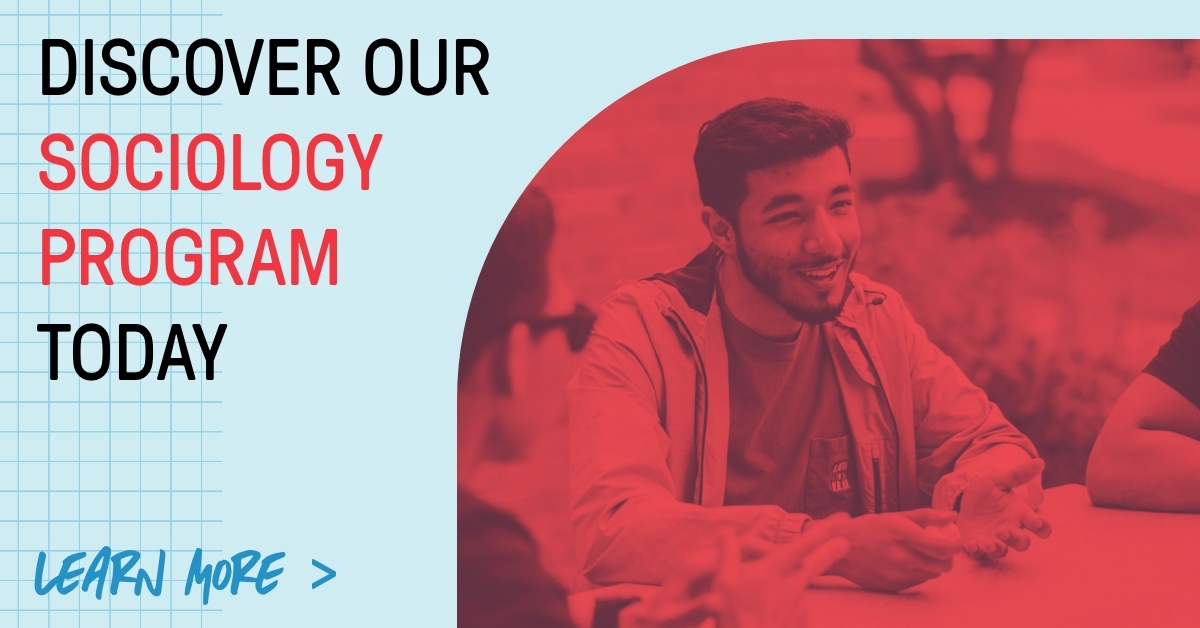
Important Research Methods in Sociology
Reviewed by Jacob Imm
Jan 13, 2023
Important Research Methods in Sociology
In a nutshell, sociology is the science of society and the humans within it. As you can imagine, it’s an incredibly vast topic that covers a lot of ground—figuratively and literally. Collecting and interpreting all the data that inevitably comes from sociological studies is no easy task.
With that in mind, you may wonder, what is sociology? And how do sociologists gain insight into human behavior, relationships, and culture? There are several research methods in sociology that professionals use to explore humanity—each with its advantages, drawbacks and ideal use cases.
If you’re interested in the mechanisms that make sociology work possible, this guide is for you. We’re looking at seven sociology research methods and their potential uses.
What Are Sociology Research Methods?
A research method is any strategy a researcher uses to collect data. In all types of sociology, research methods provide scientists with a framework for extracting information from individuals, families, small groups or entire cultures. Without well-defined research methods, sociologists would struggle to gather accurate, consistent data.
So, sociologists use research methods in the field and the lab to gather their data. There are four “types” of data that these research methods uncover:
- Quantitative data – Any data that can appear as a number or statistic is quantitative. Age and birth rates are examples of quantitative data in sociology.
- Qualitative data – Any data that can’t be quantified is qualitative. Stories, opinions, photos and videos are generally qualitative.
- Primary data – Any data that a researcher gathers firsthand is primary data.
- Secondary data – Any data collected by a previous sociologist or institution is secondary data.
Because two of these types of data refer to the information collected and two refer to the way it was collected, all data will fall under two of the above categories. For example, a firsthand account from a fisherman about the size of his typical catch is quantitative and primary.
When publishing papers, researchers will often mention the research method they used. This disclaimer is especially vital in sociology, as the method of data collection can frame the data itself. For instance, some research methods are more prone to internal bias or unreliable data. We’ll touch on these considerations when we examine each method in greater detail.
All types of data give sociologists insight into the humans they study, which is why it’s essential to know the various research methods in sociology.
7 of the Most Common Research Methods in Sociology
As per the U.S. Bureau of Labor Statistics (BLS), collecting data through research methods like surveys and interviews is one of the primary responsibilities of a sociologist. Throughout your career in sociology, you’ll likely use all of these research methods at some point. Often, you’ll leverage several methods for a single research project.
While you’ll learn about these research methods in a sociology program, it’s never too early to explore the following social research methods.
Social Surveys
One of the most used research methods in sociology is the social survey. This method involves asking participants to answer relatively simple pre-written questions.
Questionnaires are excellent tools for gathering quantitative (and occasionally qualitative) primary data from large groups of people. Because sociologists determine the questions in advance, they can anticipate the results and organize any next steps accordingly.
Another benefit is that participants can complete social surveys asynchronously.
In fact, the sociologist doesn’t even need to be present to obtain results from a questionnaire. If someone in the field can share the survey research with participants, the researcher can save travel time and costs by remaining in the lab. Online questionnaires make data collection even easier.
The most well-known example of social survey research is the national census. However, surveys are still efficient tools for smaller-scale field research, as they guarantee that all information falls within the predefined parameters.
Additionally, surveys can be done privately or even anonymously to ensure results are unbiased.
Structured Interviews
Similar to the social survey, a structured interview is a one-on-one interaction between a sociologist and a participant that involves pre-approved questions. Either in-person or on a call, the researcher reads the questionnaire to the participant and records their answers.
Structured interviews stick to the closed, pre-written questions on the survey. As such, they’re ideal for collecting quantitative data, though some qualitative data can come through.
A structured interview can be a better alternative to a social survey if the participant:
- Has limited reading or writing skills
- Is differently-abled
- Prefers a more personable approach
If you’ve ever received a call from a telemarketer asking you to take a quick survey, you’ve experienced a structured interview. A more sociological example of a structured interview would be a researcher asking predefined questions to each child in a classroom.
Unstructured Interviews
An unstructured interview is also a one-on-one interaction between a sociologist and a participant, but it’s more of a conversation. The researcher will still come prepared with a list of open-ended questions. However, they’ll allow the conversation to meander where it will, only providing gentle guidance if the interview veers too far from the identified sociology topics.
Ultimately, unstructured interviews are a more natural approach to data collection. They allow participants to lead the conversation and speak comfortably and openly. As a result, most data from unstructured interviews is qualitative—it's based more on descriptions than on numbers.
Unstructured interviews are ideal for more preliminary or exploratory studies of groups or cultures when a field research goal or learning objective has yet to be defined. This research method also reduces researcher bias, as the sociologist’s questions don’t influence the respondent’s answers.
Semi-Structured Interviews
A semi-structured interview allows for a mixed approach. The researcher will come with set questions but leave more room for natural conversations. They may also modify their questions on the fly, depending on the trajectory of the interview.
Semi-structured interviews let sociologists collect quantitative and qualitative data from a single conversation. The pre-written questions allow for comparisons between respondents, while the open-ended questions can provide context and insight.
Participant Observation
Sometimes, sociology research methods are not guided by the researcher. In participant observation, the sociologist goes into the field with a camera or notepad and records people’s behavior in their usual environment.
This research method has two variations:
- Overt participation observation – In overt observation, the participants are aware of the researcher. For example, if a sociologist is looking to learn about a family, they may ask to spend a week in their home.
- Covert participant observation – In covert observation, the subjects are unaware of the sociologist and their goal. For example, a sociologist may wander around a market and converse with vendors. While this strategy can yield more neutral results since the results aren’t influenced by a participant’s awareness, ethical questions can sometimes arise. Additionally, recording without consent is illegal in some locations. Researchers will have to consider the ethical concerns and local laws before conducting this kind of study.
When done correctly, participant observation can give researchers fascinating quantitative and qualitative information. Observing people as they are in their day-to-day lives—and not in an interview setting—is preferred by many.
Experiments
The experimental research method is the exact opposite of participant observation. Instead of studying people as they are, experiments usually occur in a controlled environment. Researchers work to control some or all variables that could impact a group in order to answer a specific question (called a hypothesis).
As with participant observation, there are two types of experimentation:
- Laboratory experiments – These experiments take place in a location chosen by the sociologist (often a lab or recording booth). Researchers bring people or groups into the controlled environment and ask questions or play out scenarios to test their hypothesis.
- Field experiments – Field experiments happen in the “real world”—for example, in a workplace or a bar. Because sociologists can control fewer factors in the field, these experiments may have less precise data. Still, field experiments have the benefit of keeping participants in their “natural habitat,” so to speak.
Experiments are ideal for investigating causal relationships between variables or isolating a particular data point.
Sociologists who perform experiments should be mindful of moral and ethical considerations—after all, real people are involved in studies. In some cases, a researcher may need to work with an Internal Review Board (IRB) to ensure their experiment is ethically sound.
Secondary Analysis
Secondary analysis involves poring over data from other researchers. By consulting past reports, studies, videos, images and books, sociologists can better understand their research topic.
As the only research method on this list that deals with secondary data, secondary analysis plays a different role in sociological studies. Researchers often prefer primary data, so they only turn to secondary analysis when:
- Existing data is already of high quality
- Travel or large-scale study is costly or logistically impossible
- More context is needed
- A meta-analysis (cross-study) is to be performed
For example, a sociologist performing an ethnographic study of an area may look at historical census data to better grasp the area’s cultural and religious makeup.
Bear in mind that dealing with secondary sources demands extra care and attention. When data isn’t primary, there can be no way to confirm the accuracy or lack of bias. As such, sociologists almost always combine secondary analysis with another research method.
Practice Research Methods in a Sociology Program
Each research method in sociology can be useful in the proper context. Depending on the goal and scope of a research project, you may use one, several or all methods to complete your study. Only by familiarizing yourself with each research method can you determine when and how to employ them.
As always, the best way to understand a concept is to experience it firsthand. In a sociology degree program, you’ll have the opportunity to do just that. Beyond the basics of research methods, sociology programs teach you how to apply these social research methods to psychology, criminology, social justice and more.
If you see a sociology degree in your future, it’s time to practice your research skills when applying for colleges. Look for schools that offer hands-on experience through internships and job placements—schools like North Central College. When you attend the right program, you’ll gain the necessary skills to conduct important sociological research—research that drives all of society forward.
Jacob Imm is the associate director of communication in the North Central College Office of Marketing and Communications. He has 12 years of collegiate communications experience and has worked with hundreds of college students. He has a bachelor’s degree from the University of Notre Dame and a master’s degree from Northern Illinois University.
Sources:
U.S. Bureau of Labor Statistics. (2022, September 8). Occupational Outlook Handbook: Sociologists. U.S. Bureau of Labor Statistics. Retrieved November 16, 2022, from https://www.bls.gov/ooh/life-physical-and-social-science/sociologists.htm

